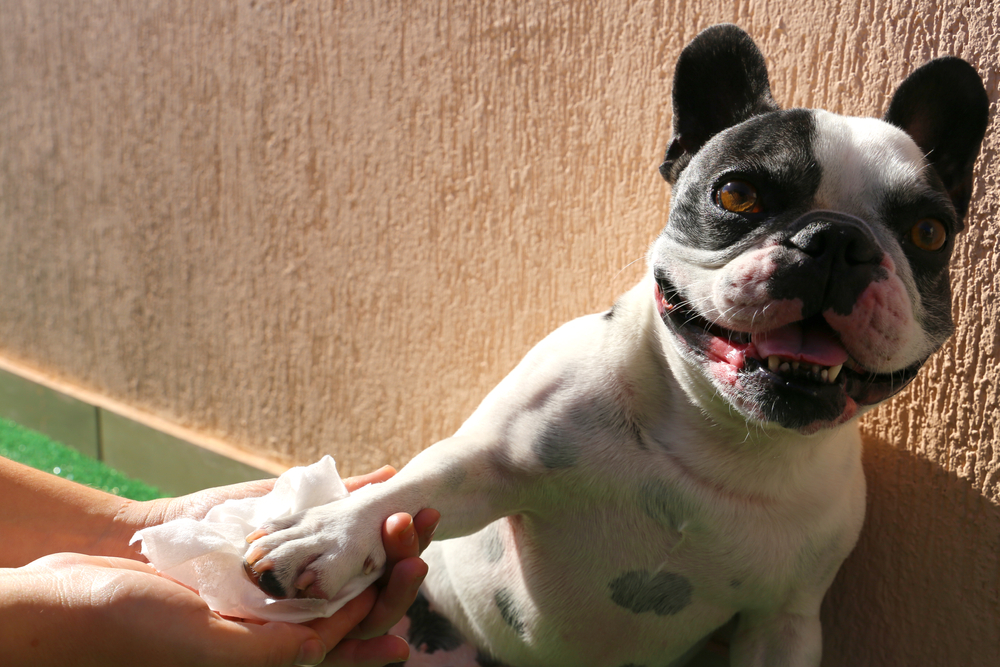If your dog is limping, you are understandably concerned, and may wonder whether you should schedule a veterinary appointment. Pain causes a dog’s limp or lameness, which is a natural reaction to shift weight from the painful area to prevent additional injury or trauma. Veterinarians categorize limping in two groups. Chronic limping lasts longer than a few days and may progress over time, and without treatment, secondary complications can occur. Acute (i.e., sudden) limping is usually secondary to trauma or injury. Limping occurs for various reasons, and our Oliver Animal Hospital South Austin veterinary team describes the most common canine lameness causes.
Reasons your dog may be limping
Limping occurs for various reasons. Some of the most common causes include:
- Inflammatory growth conditions — Puppies can develop an inflammatory growth condition, such as panosteitis or hypertrophic osteodystrophy (i.e., bone inflammation).
- Paw pad injury — Your dog can sustain a paw pad laceration after stepping on a sharp object or thorn. Sometimes, running on concrete can also injure your dog’s paw pads.
- Insect sting — The pain from an insect sting can cause your pet to limp, but they should recover within a few minutes. Watch your dog closely if an insect has bitten them, and keep an eye out for severe allergic reaction signs. If your dog’s leg, face, or muzzle begins to swell, immediately take them to an emergency veterinary hospital.
- Bite wounds — If your dog is bitten by another pet in your household or any animal, they should receive immediate veterinary treatment to prevent infection.
- Nail injury — Torn or broken nails can expose the sensitive quick inside the tough keratin, causing your dog to hobble on the affected paw.
- Ligament tears — High jumps and quick stops can cause partial or full ligament tears.
- Skin allergies — Dogs with skin allergies may lick or chew their itchy feet excessively, rubbing their paw pads raw, which leads to limping.
- Limb fracture — A serious trauma, such as getting a leg stuck in a fence or being struck by a car, can cause a fracture that may require surgery. To reduce your pet’s trauma injury risk, keep your furry pal on a leash during walks and closely monitor them outside.
- Muscle sprain or strain — Developing acutely after intense activity, muscle injuries typically resolve with rest.
- Infections — Infections, such as a joint infection, or infectious agents, such as Lyme disease, can cause limping.
- Immune-mediated diseases — An immune-mediated disease causes the body’s own immune system to attack the joints, which can also cause limping.
- Cancer — Cancers, such as osteosarcoma (i.e., bone cancer) or joint tissue cancer, can cause pain, which leads to limping.
- Joint disease — Joint diseases include hip dysplasia, elbow dysplasia, ligament disease, osteoarthritis, osteochondritis dissecans, or intervertebral disk disease (IVDD). These progressive conditions are extremely painful and often cause a dog to limp. While dogs of all ages have joint disease risk, senior dogs have a greater risk for conditions such as osteoarthritis. During growth periods, younger dogs have a higher osteochondritis dissecans risk.
At-home treatment for limping dogs

Treatment for your pet’s limp depends on the condition’s severity. Only your veterinarian can definitively diagnose the cause of your dog’s limping and prescribe appropriate treatment, However, to ease your dog’s pain before seeing the veterinarian, follow these recovery tips:
- Look for a foreign body — If a foot injury seems to be causing your dog’s limp, look for foreign bodies between their toes. If you can do so easily, remove the injury-causing item, and clean the wound with antibacterial soap and warm water.
- Soak your pet’s feet — To relieve swelling from a minor paw pad wound, soak your pet’s foot in warm water with Epsom salts. Then apply antibiotic ointment.
- Cold and heat therapy — Cold and heat therapy can ease the pain from acute muscle strains and chronic arthritis.
- Rest — Rest is essential when lameness occurs, as increased activity can worsen the injury.
No matter the cause, if your dog’s limping or lameness persists for more than 24 hours, seek veterinary care. Schedule your dog’s appointment with our Oliver Animal Hospital team.







Leave A Comment